Mastering AI: Tools and Techniques for Developing a Seamless App Experience
Table of Contents
The creation of current apps now includes artificial intelligence (AI) as a necessary component. Artificial Intelligence (AI) enables developers to create apps that are more intelligent, responsive, and user-friendly through its usage in natural language processing and tailored suggestions. We’ll dive into the methods and resources for becoming proficient with AI in app development in this extensive book, offering code samples and useful advice along the way.
Understanding AI in App Development
The knowledge of how to use an Artificial Intelligent in the app development is a big deal, as it gives us the abilities of creating personalized and users based applications. AI, short for Artificial Intelligence, is a general term that includes all kinds of computing technologies that can mimic or, in some cases, even surpass human thinking abilities. In the app development there are AI components that contribute to real time user experience improvement by means of naming, natural language processing, computer vision and the like.
AI Fundamentals
1. Machine Learning (ML)
Machine Learning (ML) falls under the umbrella of artificial intelligence (AI) and concentrates on crafting algorithms that can learn from data, making forecasts or choices without explicit programming. ML algorithms empower computers to detect patterns and glean insights from vast datasets, resulting in smarter, data-powered solutions. In app development, ML holds significant importance across different applications, spanning from recommendation systems and predictive analytics to natural language processing and computer vision.
Key Concepts in Machine Learning:
1. Supervised Learning:
In supervised learning, input-output pairs are supplied to the algorithm during training so that it can learn from labeled data. In order to anticipate new, unknown data, the algorithm learns to link input data to the associated output labels. Regression (predicting continuous values) and classification (predicting discrete labels) are two examples of supervised learning problems.
2. Unsupervised Learning:
Algorithms are trained on unlabeled data in unsupervised learning, when they discover patterns or structures in the data without explicit supervision. Clustering, or putting related data points together, and dimensionality reduction, or lowering the number of features while maintaining pertinent information, are examples of unsupervised learning tasks.
3. Reinforcement Learning:
With reinforcement learning, an agent gains the ability to interact with its surroundings by acting and being rewarded or punished for that activity. Learning an algorithm that optimizes cumulative rewards over time is the aim of reinforcement learning. Applications like gaming, robotics, and autonomous systems frequently employ reinforcement learning.
4. Feature Engineering:
In order to enhance the performance of machine learning models, feature engineering entails the selection, transformation, and creation of pertinent features from raw data. Through the extraction of valuable information from the data and the removal of noise or superfluous features, feature engineering is essential to the development of successful prediction models.
5. Model Evaluation and Validation:
In order to evaluate the model’s performance and capacity for generalization, model assessment and validation are crucial phases in the creation of machine learning models. Metrics like accuracy, precision, recall, and F1-score, together with techniques like holdout validation and cross-validation, are used to assess how well machine learning models perform on hypothetical data.
Machine Learning Algorithms:
1. Linear Regression:
A straightforward and widely used regression technique for simulating the connection between one or more independent variables and a continuous target variable is called linear regression. The goal is to identify the linear equation that best fits the data and depicts how the variables relate to one another.
2. Logistic Regression:
A classification procedure called logistic regression is used to simulate the likelihood of a binary outcome depending on one or more independent factors. It uses a logistic (sigmoid) function to estimate the likelihood that a given input belongs to a specific class.
3. Decision Trees:
Decision trees are versatile and interpretable ML algorithms used for both classification and regression tasks. They partition the feature space into regions and make predictions by traversing the tree from the root to a leaf node based on the input features.
4. Random Forests:
Random forests are ensemble learning methods that combine multiple decision trees to improve predictive performance and reduce overfitting. They build multiple decision trees on random subsets of the data and aggregate the predictions to make more robust and accurate predictions.
5. Support Vector Machines (SVM):
Encouragement Strong supervised learning techniques for regression and classification problems are called vector machines. Effective for both linear and nonlinear classification tasks, they identify the best hyperplane with the highest margin that divides several classes in the feature space.
6. Neural Networks:
A family of ML algorithms called neural networks is modeled after the architecture and operations of the neural networks found in the human brain. They are made up of linked layers of neurons, or nodes, that propagate information both forward and backward to learn how to translate input data into predictions. Multiple hidden layer deep neural networks, or deep learning, have shown impressive results in a number of fields, such as reinforcement learning, natural language processing, and picture identification.
Practical Applications of Machine Learning in App Development:
1. Recommendation Systems:
Recommendation systems in applications are powered by machine learning (ML) algorithms, which examine user behavior and preferences to propose pertinent goods, services, or information. Examples include suggested movies on streaming services, customized music applications’ playlists, and suggested products on e-commerce sites.
2. Predictive Analytics:
ML models enable predictive analytics in apps by analyzing historical data to forecast future trends, patterns, or events. Examples include sales forecasting, demand prediction, stock price prediction, and customer churn prediction in various industries.
3. Natural Language Processing (NLP):
NLP techniques powered by ML enable apps to understand and generate human language, facilitating features such as sentiment analysis, chatbots, language translation, text summarization, and voice recognition.
4. Computer Vision:
ML algorithms in computer vision enable apps to analyze and interpret visual data, including images and videos. Applications include image recognition, object detection, facial recognition, augmented reality, and autonomous driving.
5. Anomaly Detection:
ML models can detect anomalies or unusual patterns in data, helping apps identify potential fraud, security breaches, or operational issues in real-time. Anomaly detection is used in finance, cybersecurity, healthcare, and industrial IoT applications.
2. Deep Learning
The goal of the machine learning area known as “deep learning” is to train multi-layered artificial neural networks to comprehend data representations. Its enormous popularity has led to significant advancements in speech recognition, computer vision, natural language processing, and autonomous driving.
Neural Networks:
Neural networks, which are computer models based on the organization and operation of the linked neurons in the human brain, are the fundamental building blocks of deep learning. Layers of linked nodes, known as neurons, arranged into input, hidden, and output layers make up a neural network. Every neuron takes incoming signals, uses an activation function to process them, and then outputs a signal that is sent to neurons in the layer below.
Deep Neural Networks:
Multiple layers of neurons make up deep neural networks, sometimes referred to as deep networks or deep learning models, which enable them to learn intricate data representations. The quantity of layers in a neural network is referred to as its depth. Deeper networks are capable of learning hierarchical data representations, which allows them to capture aspects that are more complex and abstract.
Training Deep Learning Models:
Training a deep learning model entails providing it with labeled training data and fine-tuning its internal parameters, namely weights and biases, through a method known as backpropagation. Throughout the training phase, the model continuously refines its parameters to minimize a predefined loss function, quantifying the variance between predicted outputs and actual labels. This iterative process demands substantial volumes of labeled data and computational power, frequently aided by specialized hardware such as GPUs (Graphics Processing Units) or TPUs (Tensor Processing Units).
Convolutional Neural Networks (CNNs):
One kind of deep learning model that is frequently used for computer vision and image recognition applications is the convolutional neural network (CNN). They make use of convolutional layers, which enable the network to automatically learn spatial hierarchies of features by applying learnable filters to input data. In applications including semantic segmentation, object identification, and picture classification, CNNs have demonstrated impressive performance.
Recurrent Neural Networks (RNNs):
Another kind of deep learning model that is intended to handle sequential data is the recurrent neural network (RNN), which may handle audio, text, or time-series data. RNNs handle sequences of variable length by maintaining internal state, also known as hidden state, in contrast to feedforward neural networks, which process input data in a single pass. For applications like speech recognition, machine translation, and language modeling, this makes them very suitable.
Long Short-Term Memory (LSTM) and Gated Recurrent Unit (GRU):
To address the vanishing gradient problem in training RNNs, specialized architectures such as Long Short-Term Memory (LSTM) and Gated Recurrent Unit (GRU) were introduced. These architectures incorporate gating mechanisms that regulate the flow of information through the network, allowing them to capture long-range dependencies and handle sequences with varying time scales more effectively.
Applications of Deep Learning:
Deep learning has been applied to a wide range of applications, including:
- Computer Vision: Image classification, object detection, facial recognition, medical image analysis.
- Natural Language Processing: Sentiment analysis, language translation, text generation, named entity recognition.
- Speech Recognition: Speech-to-text conversion, voice assistants, speaker identification.
- Autonomous Systems: Autonomous vehicles, robotics, reinforcement learning.
Challenges and Future Directions:
While deep learning has achieved remarkable success in various domains, it also faces several challenges, including:
- Data Efficiency: Deep learning models often require large amounts of labeled data for training, which may not be available for all tasks.
- Interpretability: Deep neural networks are often considered “black-box” models, making it challenging to interpret their decisions and understand how they arrive at a particular prediction.
- Robustness: Deep learning models are susceptible to adversarial attacks, where small perturbations to input data can lead to incorrect predictions.
- Resource Constraints: Training and deploying deep learning models can require significant computational resources and energy consumption, limiting their applicability in resource-constrained environments.
Future directions in deep learning research include addressing these challenges through techniques such as transfer learning, self-supervised learning, model distillation, and exploring alternative model architectures beyond traditional neural networks, such as graph neural networks and transformers.
3. Natural Language Processing (NLP)
Natural Language Processing (NLP) in Artificial Intelligence (AI) is concerned with the dicovery of the human language and computer interaction. It covers the creation of algorithms or models that help computers understand, translate, and make human language relevant and meaningful, including the contextual concerns. NLP is available in many areas such as operation of search engines, virtual assistants, sentiment analysis, language translator, text summarization with many more.
Key Concepts in NLP:
- Tokenization:
The process of tokenizing text involves dividing it up into smaller chunks, such words, phrases, or characters. This makes it possible for computers to digest and interpret text at a finer level. - Part-of-Speech (POS) Tagging:
Labeling each word in a phrase with the appropriate part of speech—a noun, verb, adjective, etc.—is known as POS tagging. Knowing this information is essential to comprehending a sentence’s grammatical structure. - Named Entity Recognition (NER):
NER is the task of identifying and classifying named entities within a text, such as names of persons, organizations, locations, dates, etc. This helps extract relevant information from unstructured text data. - Sentiment Analysis:
The technique of identifying the sentiment or emotion represented in a text is called sentiment analysis, often referred to as opinion mining. It gives a sentiment score or categorizes content as positive, negative, or neutral. - Language Modeling:
Predicting the following word in a text sequence based on the words that came before it is known as language modeling. This is necessary for operations like machine translation, text creation, and autocomplete. - Text Summarization:
Condensing a text while maintaining its most crucial information is the problem of text summarization. Either extractive methods—selecting and concatenating significant sentences—or abstractive methods—creating new phrases to summarize the text—can be used for this.
Techniques and Algorithms in NLP:
- Rule-based Approaches:
Rule-based approaches use predefined linguistic rules and patterns to process and analyze text data. While simple and interpretable, they may lack robustness and scalability. - Statistical Methods:
Statistical methods utilize probabilistic models and machine learning algorithms to analyze text data. This includes techniques such as hidden Markov models (HMMs), conditional random fields (CRFs), and probabilistic graphical models. - Machine Learning Models:
Machine learning models, such as support vector machines (SVMs), decision trees, and neural networks, are commonly used in NLP tasks. These models learn patterns and relationships from labeled training data and can be used for tasks such as sentiment analysis, text classification, and named entity recognition. - Deep Learning Architectures:
Deep learning architectures, particularly recurrent neural networks (RNNs), convolutional neural networks (CNNs), and transformer-based models (e.g., BERT, GPT), have achieved state-of-the-art performance in various NLP tasks. These models can learn complex representations of text data and capture long-range dependencies.
Applications of NLP:
- Information Retrieval and Search Engines:
NLP techniques are used to analyze and index text data, enabling efficient information retrieval and search functionality in search engines and document management systems. - Virtual Assistants and Chatbots:
NLP powers virtual assistants and chatbots, allowing users to interact with systems using natural language commands and queries. These systems can provide information, answer questions, and perform tasks on behalf of users. - Sentiment Analysis and Opinion Mining:
NLP is used to analyze social media posts, customer reviews, and other text data to determine sentiment and extract insights about public opinion, brand perception, and market trends. - Machine Translation:
NLP enables machine translation systems to automatically translate text from one language to another. These systems leverage techniques such as neural machine translation (NMT) and transformer-based models to achieve high-quality translations. - Text Generation and Summarization:
NLP techniques are used to generate human-like text and summarize long documents or articles automatically. This is useful for tasks such as content generation, news summarization, and document summarization.
Challenges and Future Directions:
- Ambiguity and Context:
Natural language is inherently ambiguous and context-dependent, making it challenging for computers to understand and interpret accurately. NLP systems must be able to capture and analyze subtle nuances in language to achieve human-level understanding. - Data Privacy and Bias:
NLP systems often rely on large amounts of text data, raising concerns about data privacy, security, and bias. Developers must implement robust data protection measures and address biases in training data to ensure fair and ethical NLP applications. - Multimodal NLP:
Multimodal NLP involves integrating text data with other modalities such as images, audio, and video. This enables more sophisticated applications such as image captioning, video summarization, and multimodal sentiment analysis. - Low-Resource Languages:
Many NLP systems are designed and trained on data from high-resource languages such as English, leading to disparities in performance for low-resource languages. Future research should focus on developing NLP solutions that are inclusive and accessible to speakers of diverse languages. - Continual Learning and Adaptation:
NLP systems must be able to adapt and learn from new data over time to stay relevant and effective. Continual learning techniques, such as online learning and transfer learning, can help NLP models adapt to evolving language patterns and domains.
4. Computer Vision
Computer vision represents a facet of artificial intelligence (AI) empowering computers to interpret and comprehend the visual realm. This discipline entails crafting algorithms and methodologies to scrutinize, manipulate, and derive insights from images and videos. With its extensive utility, computer vision finds application across diverse domains such as autonomous vehicles, medical imaging, surveillance systems, augmented reality, robotics, and beyond.
Key Concepts in Computer Vision:
- Image Processing:
Image processing involves manipulating and enhancing digital images to improve their quality or extract useful information. Techniques such as filtering, edge detection, and image segmentation are commonly used in image processing tasks. - Feature Extraction:
Feature extraction is the process of identifying and extracting meaningful features from images, such as corners, edges, textures, or keypoints. These features serve as the basis for higher-level analysis and interpretation of images. - Object Detection:
Object detection is the task of identifying and locating objects of interest within an image or video. This involves detecting and localizing objects by drawing bounding boxes around them and assigning class labels. - Image Classification:
Image classification is the task of categorizing images into predefined classes or categories. This involves training machine learning models to recognize patterns and features in images and assign them to appropriate classes. - Semantic Segmentation:
Semantic segmentation is the task of partitioning an image into multiple segments or regions and assigning a class label to each pixel. This allows for pixel-level understanding of the objects and their boundaries within an image. - Object Tracking:
Object tracking involves following the movement and trajectory of objects over time in a sequence of frames or video footage. This is essential for applications such as surveillance, human-computer interaction, and augmented reality.
Techniques and Algorithms in Computer Vision:
- Traditional Computer Vision Algorithms:
Traditional computer vision algorithms, such as edge detection, corner detection, and Hough transforms, are based on handcrafted features and mathematical operations. While effective for simple tasks, they may lack robustness and scalability for complex scenes and datasets. - Machine Learning Models:
Machine learning models, such as support vector machines (SVMs), decision trees, and random forests, are commonly used in computer vision tasks. These models learn patterns and relationships from labeled training data and can be used for tasks such as image classification, object detection, and image segmentation. - Deep Learning Architectures:
Deep learning architectures, particularly convolutional neural networks (CNNs), have revolutionized computer vision by achieving state-of-the-art performance in various tasks. CNNs can automatically learn hierarchical representations of features from raw pixel data, enabling end-to-end learning of complex visual tasks.
Applications of Computer Vision:
- Autonomous Vehicles:
Computer vision is crucial for autonomous vehicles to perceive and understand the surrounding environment, detect obstacles, recognize traffic signs, and navigate safely on roads. - Medical Imaging:
Computer vision techniques are used in medical imaging for tasks such as tumor detection, organ segmentation, disease diagnosis, and image-guided surgery. - Surveillance Systems:
Surveillance systems leverage computer vision algorithms for object detection, activity recognition, and abnormal behavior detection in video streams to enhance security and public safety. - Augmented Reality (AR):
Augmented reality applications overlay digital content onto the real-world environment in real-time, using computer vision techniques to track and align virtual objects with physical objects in the scene. - Robotics:
Computer vision enables robots to perceive and interact with the environment, navigate autonomously, manipulate objects, and perform tasks such as object grasping and manipulation.
Challenges and Future Directions:
- Robustness to Variability:
Computer vision systems must be robust to variations in lighting conditions, camera viewpoints, object appearances, and environmental factors to perform reliably in real-world settings. - Interpretability and Explainability:
Deep learning models used in computer vision may be complex and difficult to interpret, making it challenging to understand how they arrive at their predictions. Interpretability and explainability techniques are needed to provide insights into model decisions and improve trust and transparency. - Data Privacy and Security:
Computer vision systems often rely on large amounts of visual data, raising concerns about data privacy, security, and potential misuse. Developers must implement measures to protect sensitive information and ensure compliance with privacy regulations. - Real-time Performance:
Many computer vision applications require real-time processing and low-latency performance to provide timely responses and feedback. Optimizing algorithms and architectures for efficiency and scalability is essential for achieving real-time performance in resource-constrained environments. - Continual Learning and Adaptation:
Computer vision systems must be able to adapt and learn from new data over time to handle changing environments, contexts, and user preferences. Continual learning techniques, such as online learning and transfer learning, can help computer vision models adapt and evolve over time.
Tools for AI in App Development
With so many tools and frameworks available to them, developers may easily integrate artificial intelligence features into their apps when it comes to AI-driven app development. These technologies give developers the ability to construct intelligent and feature-rich apps more quickly by offering pre-trained models, APIs, and frameworks. Let’s examine some of the well-known libraries and tools used in app development across several AI fields, along with code samples that demonstrate how to use them:
1. Machine Learning Frameworks:
TensorFlow:
TensorFlow is an open-source machine learning framework developed by Google. It provides comprehensive support for building and deploying machine learning models across various platforms.
import tensorflow as tf
# Define a simple neural network model
model = tf.keras.Sequential([
tf.keras.layers.Dense(64, activation='relu', input_shape=(784,)),
tf.keras.layers.Dense(10, activation='softmax')
])
# Compile the model
model.compile(optimizer='adam',
loss='sparse_categorical_crossentropy',
metrics=['accuracy'])
# Train the model
model.fit(train_images, train_labels, epochs=10)PyTorch:
PyTorch is an open-source deep learning framework developed by Facebook’s AI Research lab. It offers dynamic computational graphs and an intuitive interface for building and training deep learning models.
import torch
import torch.nn as nn
import torch.optim as optim
# Define a simple neural network model
class NeuralNetwork(nn.Module):
def __init__(self):
super(NeuralNetwork, self).__init__()
self.fc1 = nn.Linear(784, 64)
self.fc2 = nn.Linear(64, 10)
def forward(self, x):
x = torch.relu(self.fc1(x))
x = torch.softmax(self.fc2(x), dim=1)
return x
model = NeuralNetwork()
# Define loss function and optimizer
criterion = nn.CrossEntropyLoss()
optimizer = optim.Adam(model.parameters(), lr=0.001)
# Train the model
for epoch in range(10):
running_loss = 0.0
for i, data in enumerate(trainloader, 0):
inputs, labels = data
optimizer.zero_grad()
outputs = model(inputs)
loss = criterion(outputs, labels)
loss.backward()
optimizer.step()2. Natural Language Processing (NLP) Libraries:
NLTK (Natural Language Toolkit):
NLTK is a leading platform for building Python programs to work with human language data. It provides easy-to-use interfaces and libraries for tasks such as tokenization, stemming, tagging, parsing, and more.
import nltk from nltk.tokenize import word_tokenize # Tokenize a sentence sentence = "Natural Language Processing is fascinating!" tokens = word_tokenize(sentence) print(tokens)
spaCy:
spaCy is a modern NLP library that offers pre-trained models and efficient processing pipelines for various NLP tasks. It provides high-performance tokenization, part-of-speech tagging, named entity recognition, and dependency parsing.
import spacy
# Load spaCy English model
nlp = spacy.load("en_core_web_sm")
# Process a text
text = "SpaCy is a powerful natural language processing library."
doc = nlp(text)
# Extract named entities
for ent in doc.ents:
print(ent.text, ent.label_)3. Computer Vision Libraries:
OpenCV (Open Source Computer Vision Library):
OpenCV is a popular computer vision library that provides a wide range of functionalities for image and video processing, including image filtering, feature detection, object detection, and more.
import cv2
import matplotlib.pyplot as plt
# Read an image
image = cv2.imread('image.jpg')
# Convert to grayscale
gray_image = cv2.cvtColor(image, cv2.COLOR_BGR2GRAY)
# Display the grayscale image
plt.imshow(gray_image, cmap='gray')
plt.axis('off')
plt.show()TensorFlow Object Detection API:
TensorFlow Object Detection API is a collection of pre-trained object detection models and tools built on TensorFlow. It enables developers to easily perform object detection tasks on images and videos.
import tensorflow as tf
from object_detection.utils import visualization_utils as viz_utils
from object_detection.utils import label_map_util
# Load the pre-trained model
detect_fn = tf.saved_model.load('path/to/saved_model')
# Perform object detection on an image
image_np = cv2.imread('image.jpg')
input_tensor = tf.convert_to_tensor(image_np)
detections = detect_fn(input_tensor)
# Visualize the detections
category_index = label_map_util.create_category_index_from_labelmap('path/to/label_map.pbtxt')
viz_utils.visualize_boxes_and_labels_on_image_array(
image_np,
detections['detection_boxes'][0].numpy(),
detections['detection_classes'][0].numpy().astype(int),
detections['detection_scores'][0].numpy(),
category_index,
use_normalized_coordinates=True,
max_boxes_to_draw=200,
min_score_thresh=.30,
agnostic_mode=False)
# Display the annotated image
plt.imshow(cv2.cvtColor(image_np, cv2.COLOR_BGR2RGB))
plt.axis('off')
plt.show()4. Cloud AI Services:
Google Cloud AI:
Google Cloud AI offers a suite of pre-trained models and APIs for various AI tasks, including vision, natural language, translation, and more. Developers can integrate these services directly into their applications to leverage powerful AI capabilities.
from google.cloud import language_v1
# Initialize the Natural Language client
client = language_v1.LanguageServiceClient()
# Analyze sentiment of a text
document = language_v1.Document(content="I love using Google Cloud AI!", type_=language_v1.Document.Type.PLAIN_TEXT)
response = client.analyze_sentiment(request={'document': document})
sentiment_score = response.document_sentiment.score
sentiment_magnitude = response.document_sentiment.magnitude
print("Sentiment Score:", sentiment_score)
print("Sentiment Magnitude:", sentiment_magnitude)Amazon AWS AI:
Amazon AWS AI provides a wide range of AI services, including image and video analysis, natural language understanding, speech recognition, and more. Developers can access these services via APIs to add AI capabilities to their applications.
import boto3
# Initialize the Amazon Comprehend client
comprehend = boto3.client('comprehend')
# Detect entities in a text
response = comprehend.detect_entities(Text='Amazon AWS AI provides powerful AI services.')
entities = response['Entities']
for entity in entities:
print(entity['Text'], '-', entity['Type'])These are just a few examples of the myriad tools and libraries available for incorporating AI into app development. By leveraging these tools and integrating AI capabilities into their applications, developers can create intelligent, adaptive, and user-centric experiences that enhance productivity, efficiency, and user satisfaction.




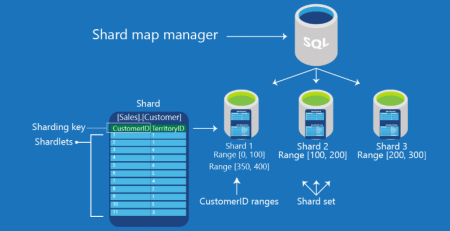

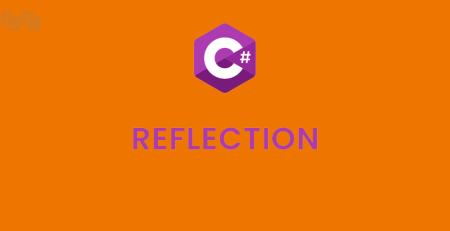

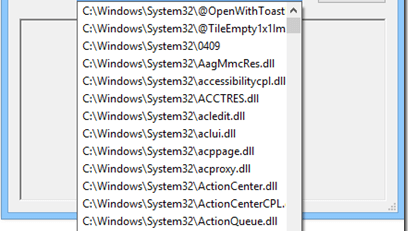

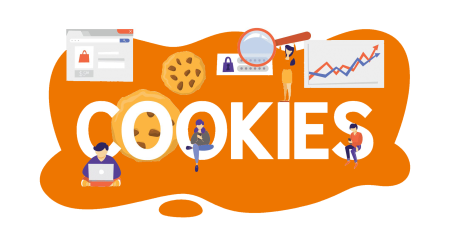

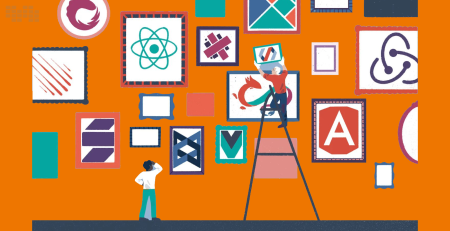
Leave a Reply